
How Fast Can You Build Muscle Naturally?
You may have heard that natural lifters can gain 20 pounds of muscle in their first year, 10 in their second, 5 in their third, and then a few pounds per year until they reach their natural potential. That doesn’t seem to be true for the average man, and you may not be average anyway.
How fast can you build muscle naturally? That depends. Let’s take a deeper look.
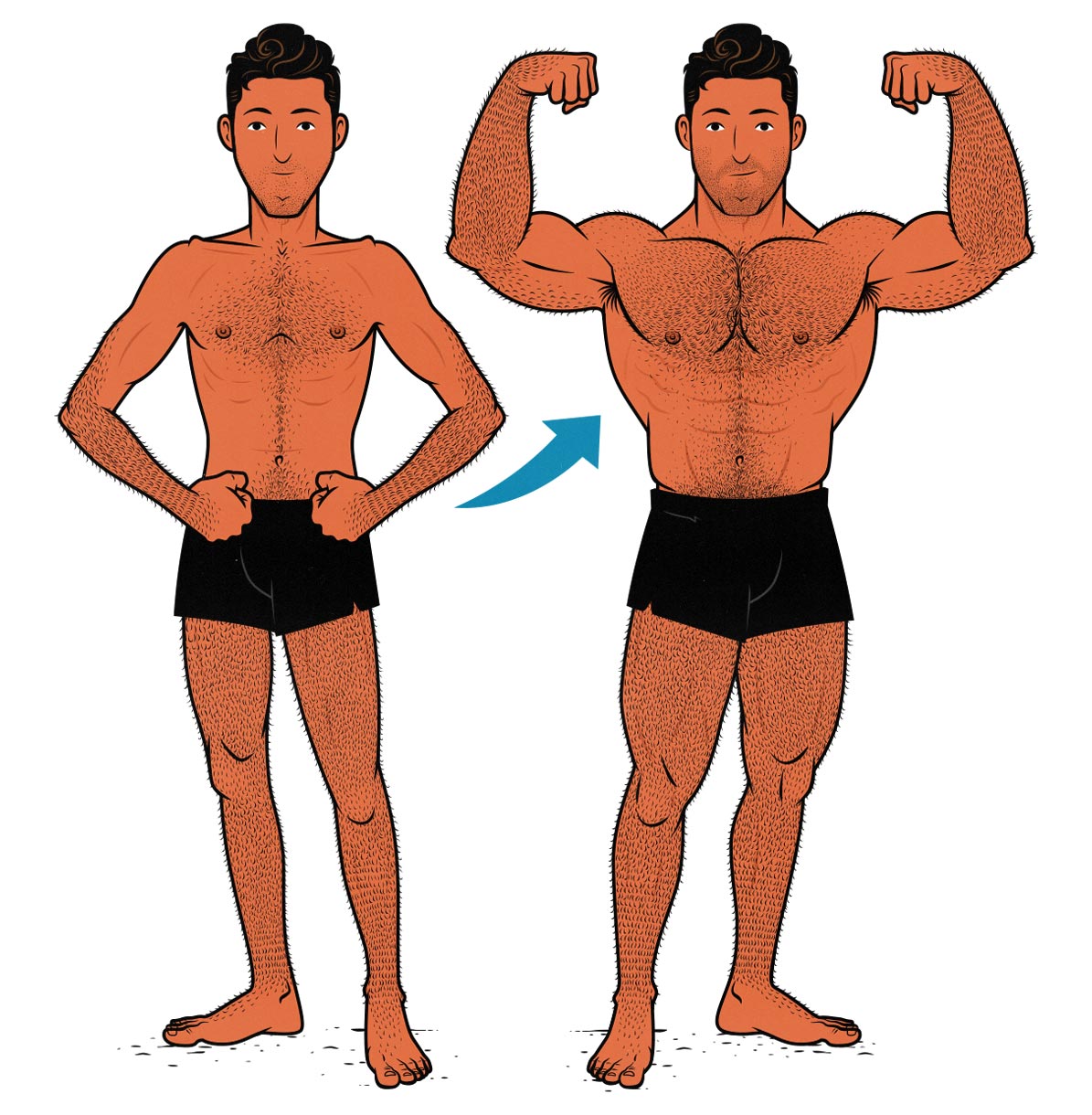
How Fast Can Beginners Build Muscle?
Research Overview
The generic answer you’ll find in fitness communities is that people can gain around 2 pounds of muscle per month, with beginners able to build muscle a little bit faster than that. I’m not sure where that rule of thumb comes from. I’m not sure it’s useful.
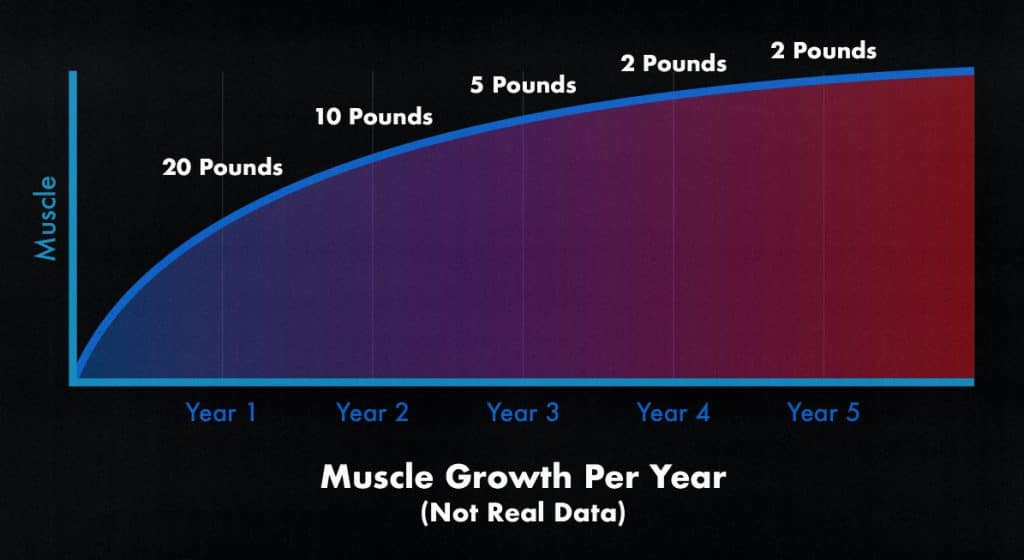
If we look at the research, most studies show faster rates of muscle growth than that:
- In a study by Tarnopolsky and colleagues, beginners gained 9 pounds of muscle during their first 8 weeks of working out and drinking weight-gainer shakes (study).
- In a study by Willoughby and colleagues, beginners gained 12 pounds of muscle during their first 10 weeks of weight training and supplementing with protein (study).
- In a study by Hartman and colleagues, beginners gained 15 pounds of muscle during their first 12 weeks of lifting weights and drinking more milk (study).
Most of these guys gained a few pounds of fat along with the muscle, raising their numbers even higher. For example, if you start at 15% body fat, gain 20 pounds, and finish at 16% body fat, you’ll have gained 15 pounds of lean mass and 5 pounds of fat. You won’t look fatter, though. You’ll just look bigger and stronger. You might be tempted to say you’ve gained 20 pounds of “muscle.”
If this research is to be trusted, you can expect to gain around 20 pounds during your first 3 months of bulking. Just keep in mind that “only” 15 of those pounds will be lean.
Real Bulking Results
The research lines up with my own experience bulking up. I gained 40 pounds in 15 months, even though I only spent 6 of those months bulking.
During my first bulk, I gained 20 pounds in 3 months, got sick of overeating, and took a few months off. When I regained my appetite, I embarked on a second bulk, gaining 25 pounds in 3 months. Here are my progress photos from that second bulk, going from 150 to 175 pounds:
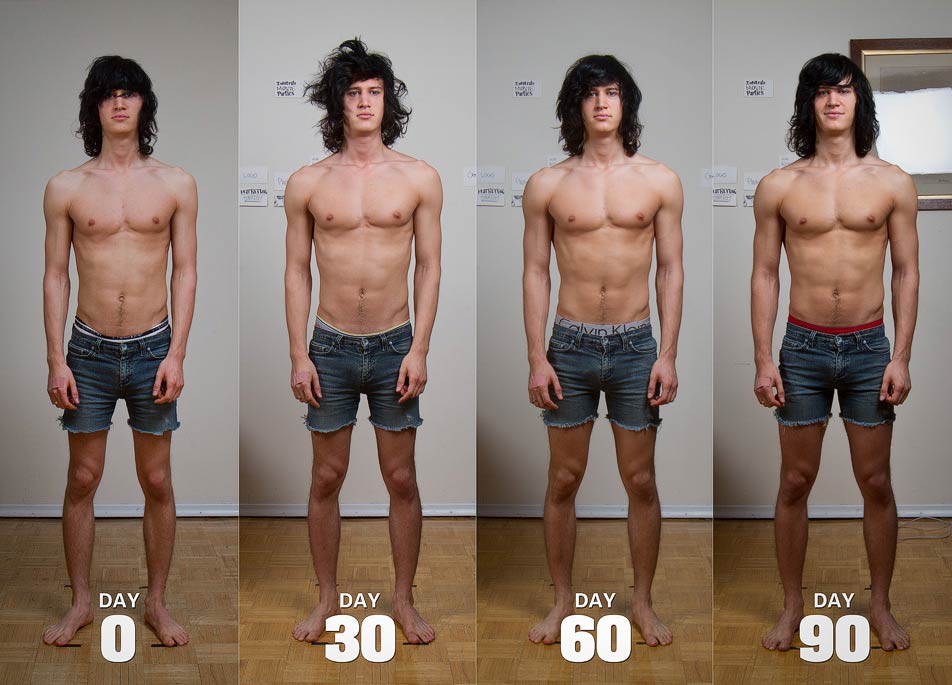
I did this bulk with my roommate, Jared, who was still a skinny beginner. He gained even more muscle than I did. More on that in a second.
We might be outliers, but we don’t seem to be. Most of our thin clients who are still relatively new to lifting weights are able to gain around 20 pounds within their first 3 months of bulking. We used to promise that to everyone doing our programs.
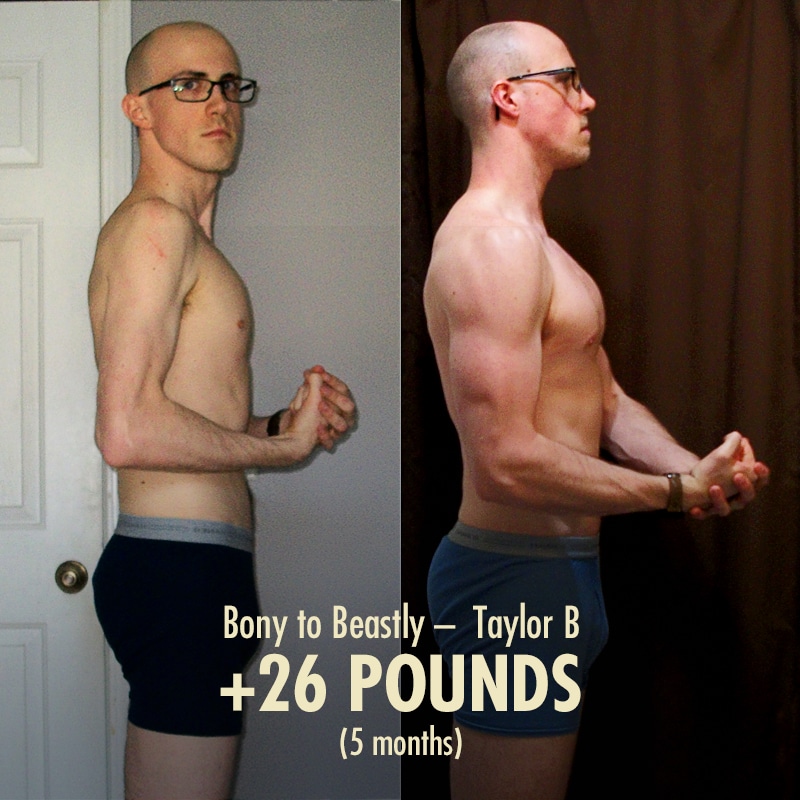
Nowadays, we recommend gaining about a pound per week instead. We promise 20 pounds in 20 weeks. Some guys can benefit from bulking faster than that, as I did, but a more moderate rate of weight produces more consistent results, especially in people who aren’t starting so thin.
Skinny Beginners Can Build Muscle Even Faster
Many skinny beginners assume they have bad muscle-building genetics. That couldn’t be further from the truth. The skinnier you are, the more room on your frame you have for muscle growth, and so the faster you’ll be able to build muscle—at least at first.
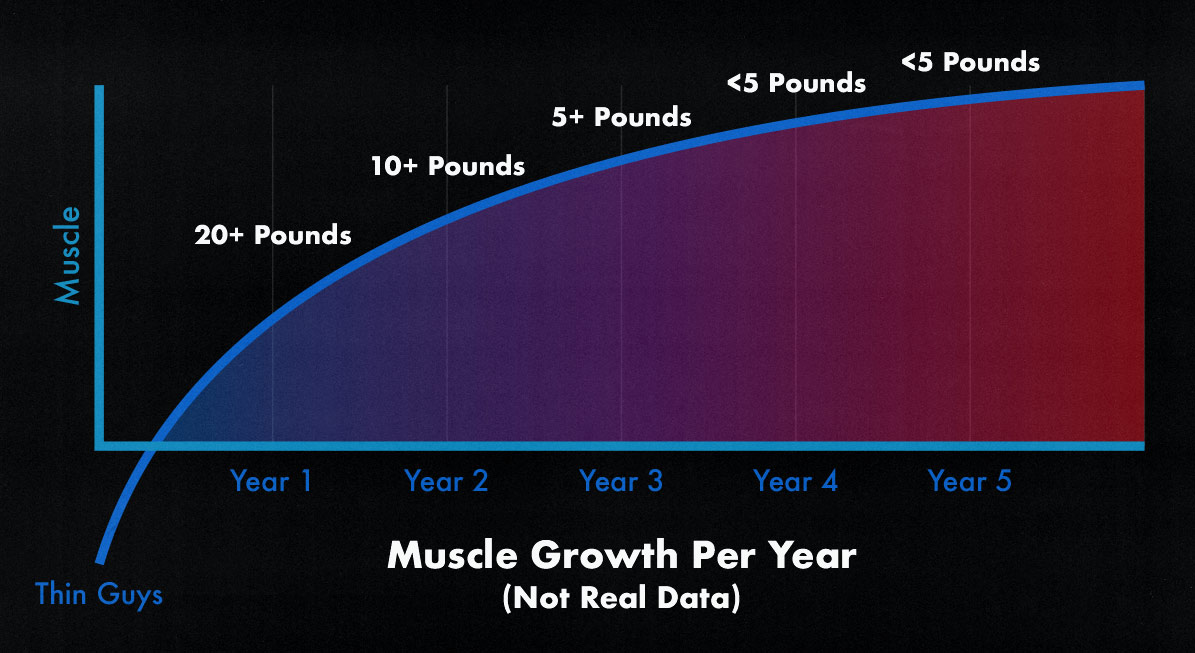
During my first 3 months of bulking, I had almost no idea what I was doing. I was doing push-ups and lifting some old dumbbells my dad had. I’d do makeshift workouts 3 times per week, focusing almost entirely on my upper body. At the same time as I started working out, I started eating meals at consistent times every day, cut out junk food, and started drinking a litre of skim milk every day.
My bulking routine wasn’t optimal by any stretch of the imagination. I wasn’t even training the biggest muscles in my body (my quads, glutes, and calves). Still, it was enough for me to gain 20 pounds in 3 months without any visible fat gain.
Three Skinny Bulking Examples
When Jared saw my progress, he agreed to become my training partner. Every Monday, Wednesday, and Friday, we’d walk to the gym for a full-body workout. Every Sunday, we’d cook up a giant pot of chili con carne. We’d eat that chili every day for lunch. Sometimes for dinner, too.
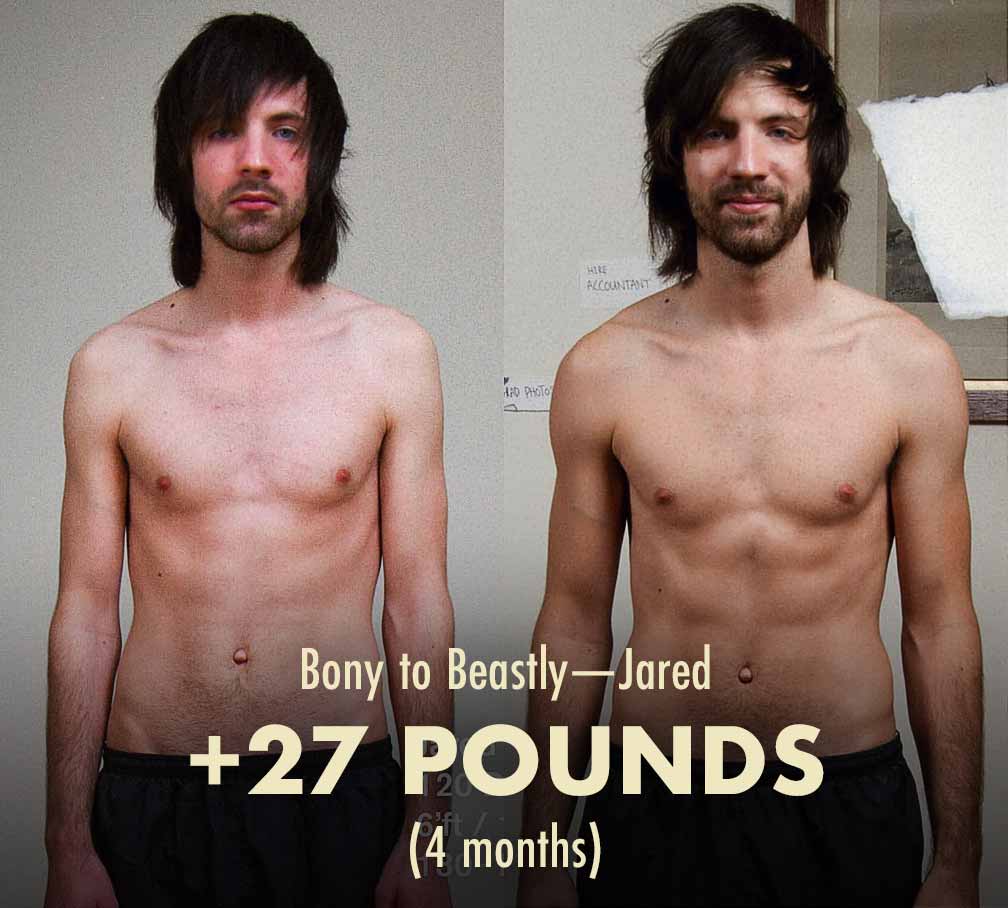
Jared gained 27 pounds in 4 months, naturally, with no visible increase in body fat. In fact, because he’d gained so much muscle, he looked even leaner than when he started.
Not everyone can build muscle that fast. First of all, he was starting off underweight. Second, he was new to lifting weights. Third, we were getting the advice of a professional strength coach (Marco). Fourth, we had perfect compliance with our workout program and bulking diet. We didn’t miss a single workout or meal for 4 months straight.
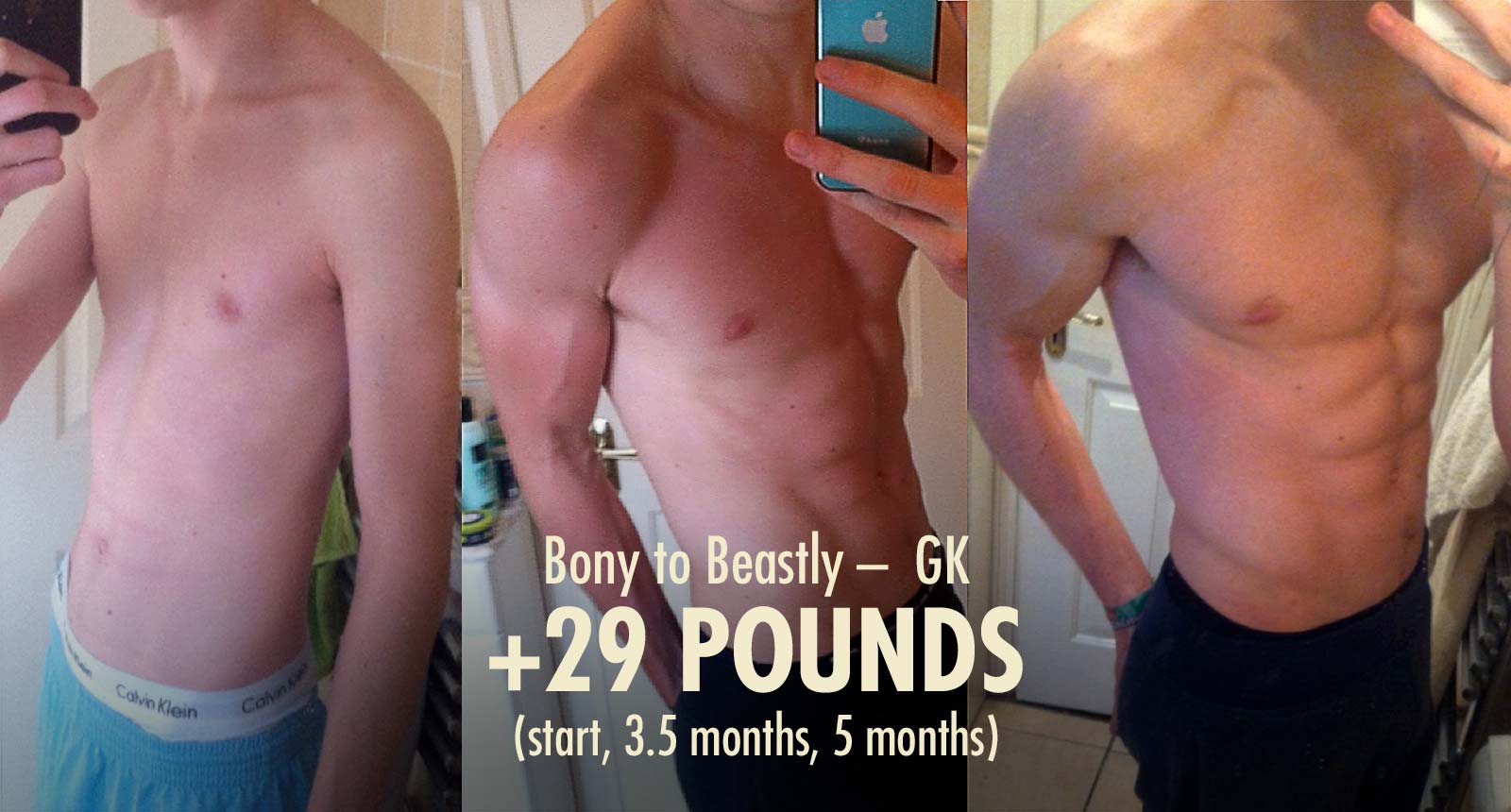
We’ve had clients get similar results. If someone starts the program quite skinny, they’re often able to build muscle remarkably fast. If they’re naturally lean, they’re often able to build muscle quite leanly.
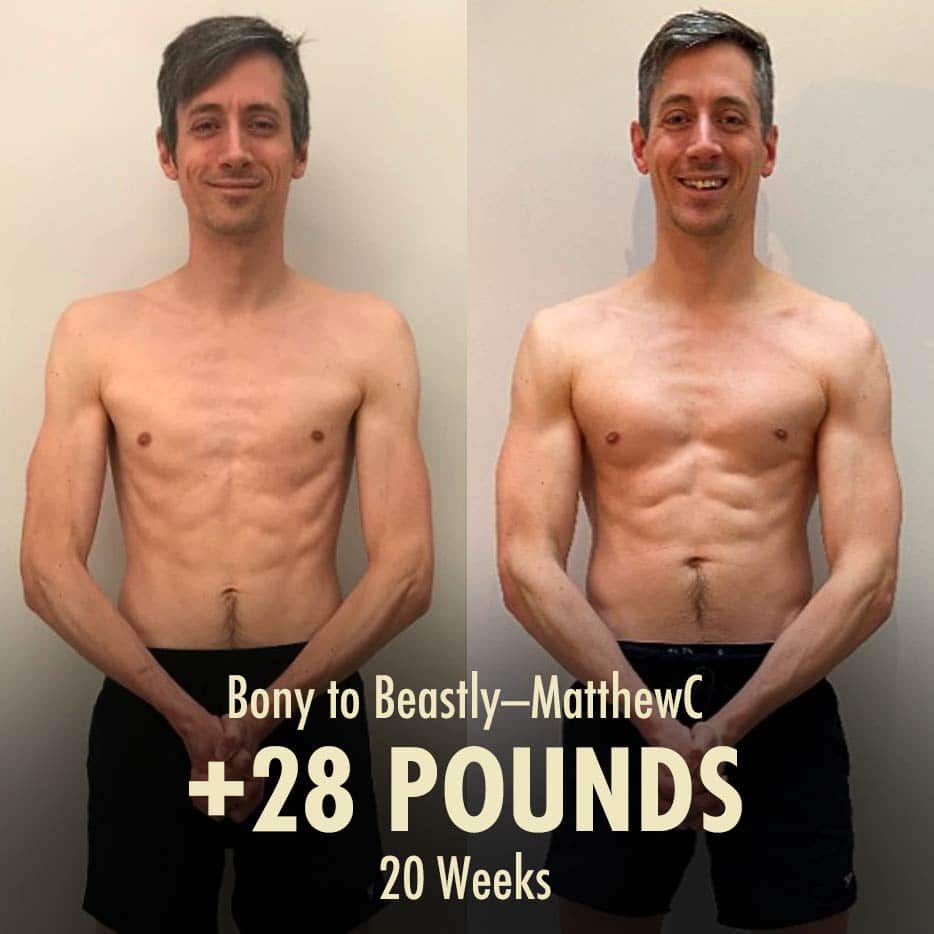
Muscular Guys Build Muscle More Slowly
Our bone structures can only hold so much muscle mass. There’s a natural limit to how much muscle we can build, and as we approach it, our rate of muscle growth slows. Mind you, this natural limit is quite high, and most people never reach it. You can continue building muscle for many, many years.

I’ve been lifting weights for a decade now, and I’ve gained over 60 pounds. I’m still not at my natural limit. Last year I embarked on a slower bulk, gaining 20 pounds in 12 months, going from 185 to 205 pounds. I accomplished my lifetime goal of benching 315 pounds. I also deadlifted 485 pounds, bringing me within spitting distance of my goal to deadlift 500. It was a successful bulk.
After finishing the bulk, I kept lifting weights, and I kept eating well, but I started listening to my appetite again. I have a naturally small appetite, so I started gradually losing weight, burning off the extra fat I had gained while bulking. (We call this Reverse Bulking.) By the end of my Reverse Bulk, I had dropped down to 190 pounds, finishing at the same body-fat percentage as when I started. After a year of diligent bulking, I only gained 5 pounds of muscle.
I’m happy with those 5 pounds, and it’s cool how I’m getting gradually stronger and fitter as I get older. But as you get closer to your natural potential, it takes much longer to build muscle.
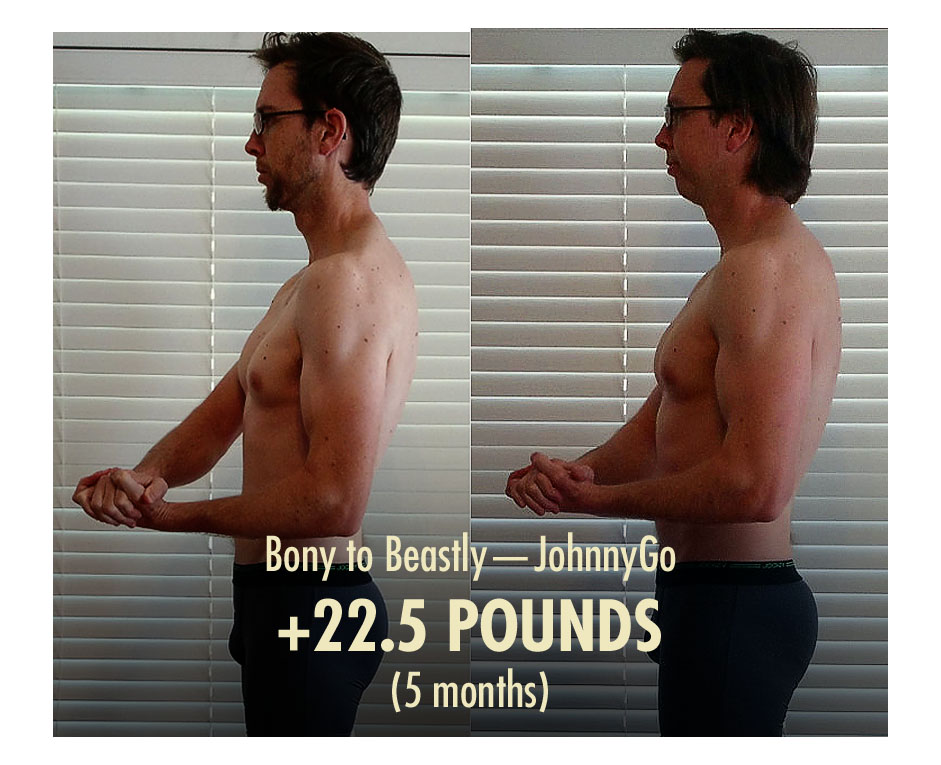
If you’ve already succeeded at building an athletic physique, you won’t be able to build muscle as fast. You may still benefit from gaining weight somewhat quickly, and your results will look better than ever, but it won’t compare to the newbie gains skinny beginners get.
What’s the Fastest Way to Build Muscle?
Train for Muscle Size
There are a few different styles of resistance training, some with more emphasis on maximal strength (strength training) and others with more emphasis on muscular endurance. The best way to build muscle is to train for muscle growth. This is called hypertrophy training.
A good hypertrophy training program is built around big compound exercises, such as push-ups, squats, chin-ups, and deadlifts. Those exercises train all the biggest muscles. Then you can add isolation exercises to fill in the gaps. For example, compound exercises don’t train your arm muscles very well, so if you want bigger arms, you could add biceps curls, triceps extensions, and lateral raises.
You’d do those exercises for 2–5 sets of 6–20 repetitions, resting just long enough between sets to recover most of your strength.
There are many different workout splits, and most of them can work, but if you’re new to lifting weights, the most powerful way to stimulate muscle growth is to train your full body 3 times per week. That will keep your muscles growing steadily all week long.
Every time you repeat a workout, try to lift more weight than last time. This is called progressive overload. However, to lift more weight than last time, you need to show up bigger and stronger than last time. To do that, you need to eat a good bulking diet.
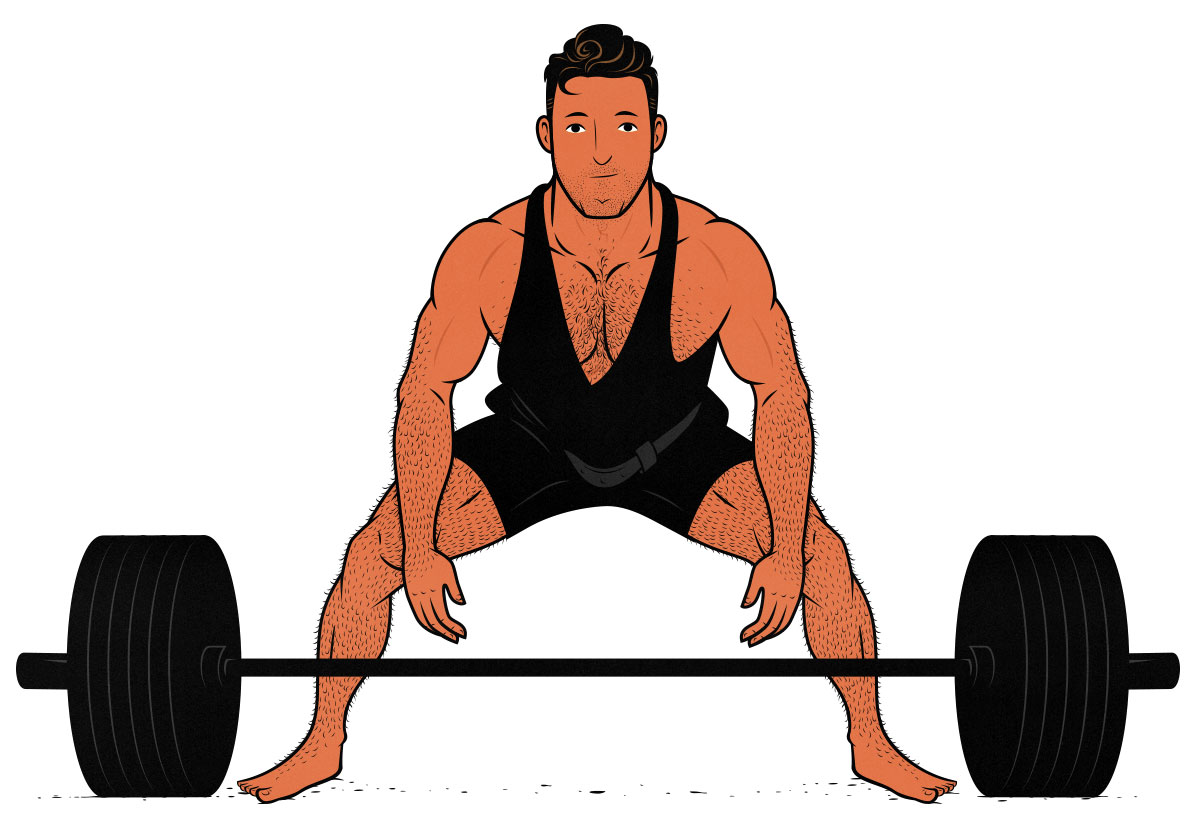
Eat a Good Bulking Diet
If you’re overweight or skinny fat, you have extra energy stored as body fat. You can use that energy to build muscle. You don’t need to get extra energy from your diet. Just listen to your appetite. Focus on eating better instead of eating more.
If you’re lean or thin, you’ll need to fuel muscle growth by eating a good bulking diet. A bulking diet is high in protein, carbs, and healthy fats, giving you the calories and resources you need to build muscle. A good diet is made up of balanced meals, each rich in whole foods, fibre, and micronutrients, filling you with vigour and keeping your digestive system strong.
You’ll need to eat enough food to gain weight. You can gain weight slowly to ward off fat gain (lean bulking) or faster to build more muscle (aggressive bulking). Most guys take the middle road, doing a classic bulk, gaining 0.5–1 pound per week. To do that, you’ll need around 200–500 extra calories per day.

Get Into A Calorie Surplus
You don’t need to track your calories. You could eat similar meals at similar times every day, adding more snacks or increasing your serving sizes whenever you stop gaining weight. This is the approach I’ve used for all my bulks except for one.
Tracking calories does work, though. It lets you be even more precise with your calorie intake, allowing you to gain weight even more steadily. You’ll also gain a better understanding of the nutritional value of the foods you eat. The best calorie-tracking apps go beyond calories, telling you about the fibre, vitamins, and minerals you’re eating. I only tracked my calories once. It was a pain, but I’m still benefitting from what I learned about my diet.
If you want to try tracking your calories, we’re affiliated with MacroFactor. After testing all the top calorie-tracking apps, we found it to be the best one for building muscle. It was founded by two of the top hypertrophy research reviewers, and it shows. You can get an extended free trial with the code “b2b”.
Live a Good Lifestyle
It should probably go without saying, but the better your lifestyle is, the more it will support muscle growth. Try to do a little cardio, such as going on a brisk 20-minute walk every morning. Try to get to bed on time so that you wake up feeling refreshed. Try to avoid vices that are bad for you and your goals, such as excessive drinking.
In our program, we spend dozens of pages going through all the details of how to eat a good diet and live a better lifestyle. You already know how to get most of the benefits, though. Most of us have an intuitive understanding of what a good lifestyle looks like.
Conclusion
If you’re a thin beginner, you can expect to gain around 4–5 pounds of muscle per month, provided you’re eating enough food to fuel that growth. The average skinny guy bulking up with our program gains 25 pounds within 6 months, with gains ranging from 15–44 pounds.
A small portion of the weight you gain will be fat. If you’re bulking at a moderate pace, the fat you gain probably won’t be noticeable. You’ll just look bigger and stronger. If you bulk more aggressively, the chance of gaining extra fat goes up, but so will your rate of muscle growth.
If you want help building muscle, we can walk you through the entire process from start to finish. Our Bony to Beastly Program includes a 5-month workout routine, tutorials teaching every exercise, a diet guide, a recipe book, and a year of coaching in our online community.

